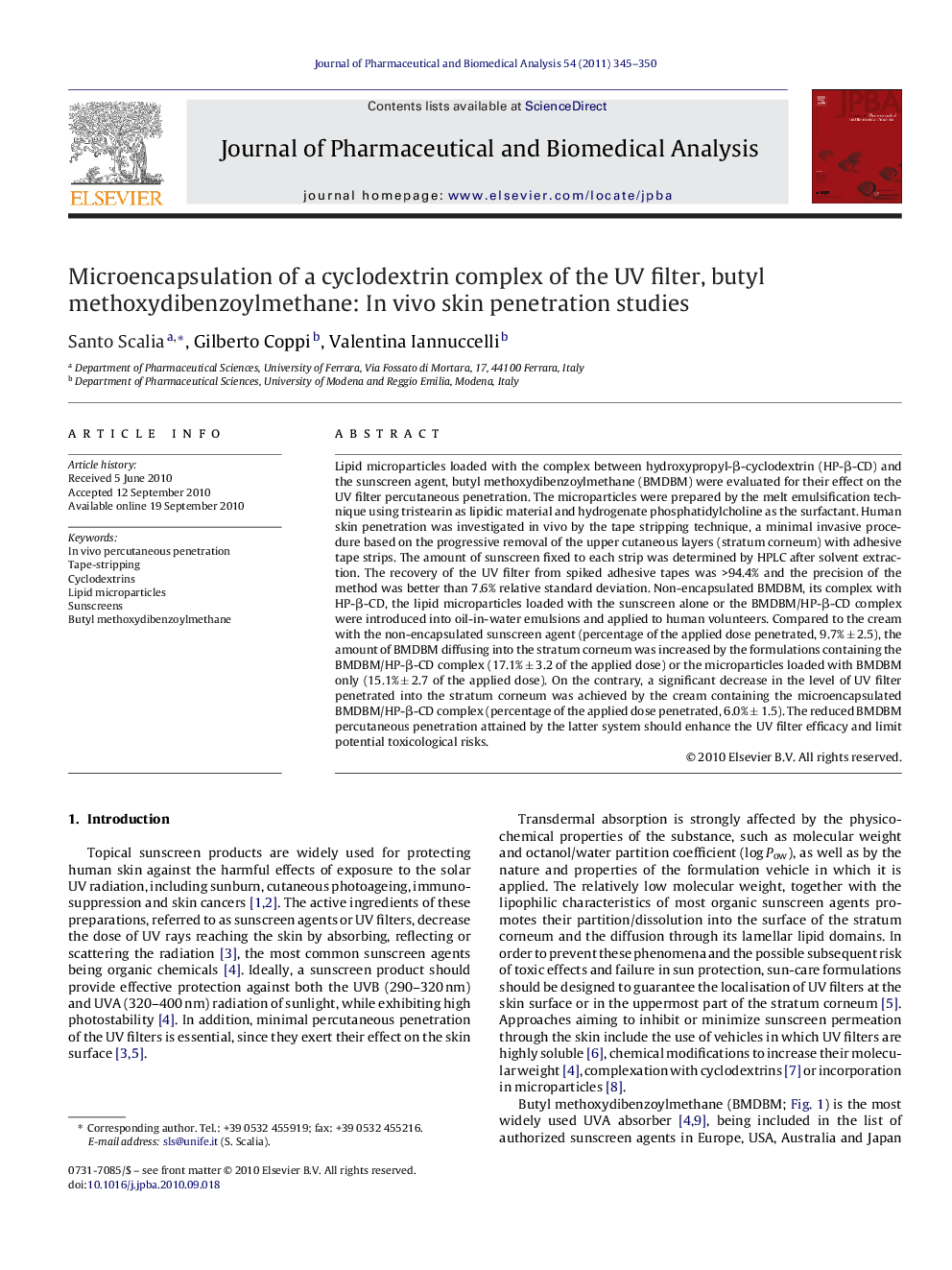| کد مقاله | کد نشریه | سال انتشار | مقاله انگلیسی | نسخه تمام متن |
|---|---|---|---|---|
| 1223077 | 967880 | 2011 | 6 صفحه PDF | دانلود رایگان |

Lipid microparticles loaded with the complex between hydroxypropyl-β-cyclodextrin (HP-β-CD) and the sunscreen agent, butyl methoxydibenzoylmethane (BMDBM) were evaluated for their effect on the UV filter percutaneous penetration. The microparticles were prepared by the melt emulsification technique using tristearin as lipidic material and hydrogenate phosphatidylcholine as the surfactant. Human skin penetration was investigated in vivo by the tape stripping technique, a minimal invasive procedure based on the progressive removal of the upper cutaneous layers (stratum corneum) with adhesive tape strips. The amount of sunscreen fixed to each strip was determined by HPLC after solvent extraction. The recovery of the UV filter from spiked adhesive tapes was >94.4% and the precision of the method was better than 7.6% relative standard deviation. Non-encapsulated BMDBM, its complex with HP-β-CD, the lipid microparticles loaded with the sunscreen alone or the BMDBM/HP-β-CD complex were introduced into oil-in-water emulsions and applied to human volunteers. Compared to the cream with the non-encapsulated sunscreen agent (percentage of the applied dose penetrated, 9.7% ± 2.5), the amount of BMDBM diffusing into the stratum corneum was increased by the formulations containing the BMDBM/HP-β-CD complex (17.1% ± 3.2 of the applied dose) or the microparticles loaded with BMDBM only (15.1% ± 2.7 of the applied dose). On the contrary, a significant decrease in the level of UV filter penetrated into the stratum corneum was achieved by the cream containing the microencapsulated BMDBM/HP-β-CD complex (percentage of the applied dose penetrated, 6.0% ± 1.5). The reduced BMDBM percutaneous penetration attained by the latter system should enhance the UV filter efficacy and limit potential toxicological risks.
Journal: Journal of Pharmaceutical and Biomedical Analysis - Volume 54, Issue 2, 25 January 2011, Pages 345–350